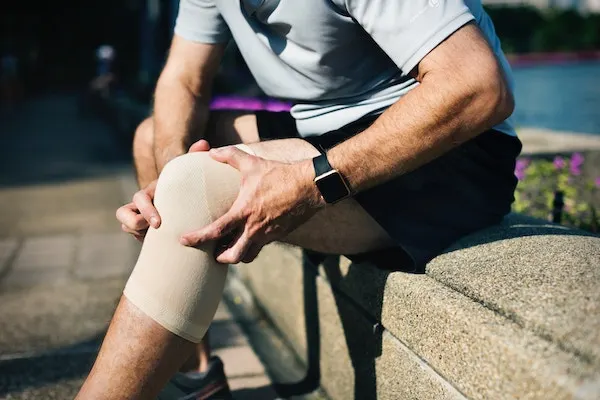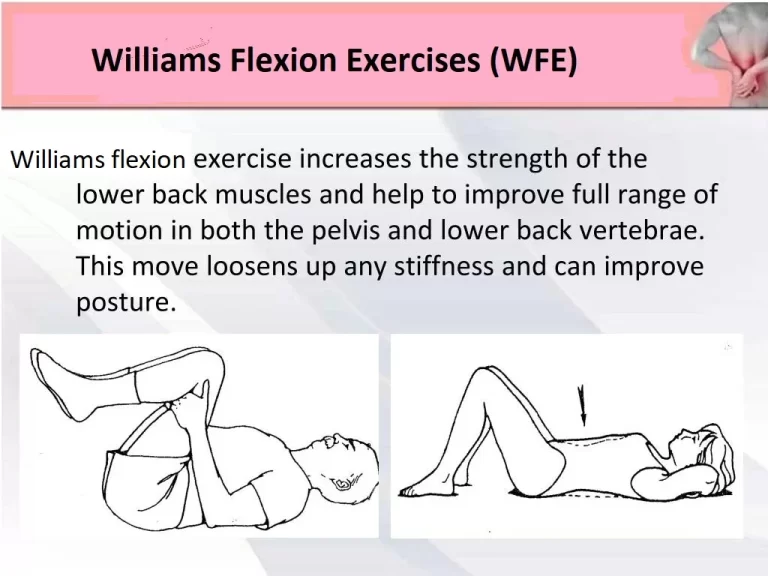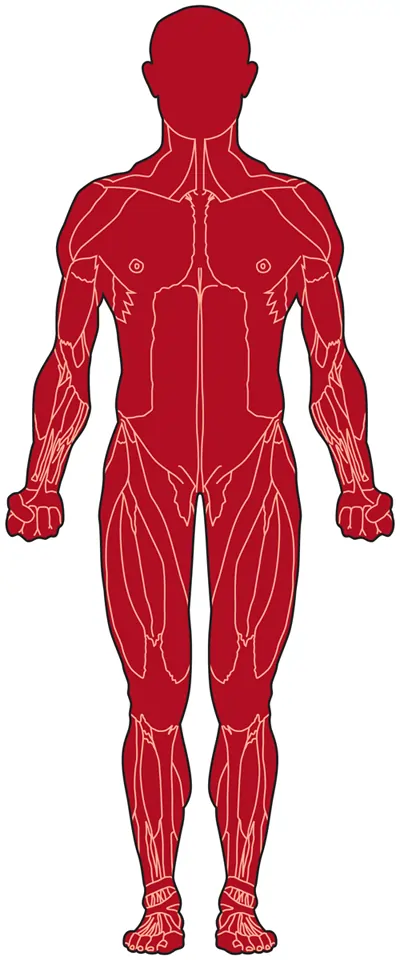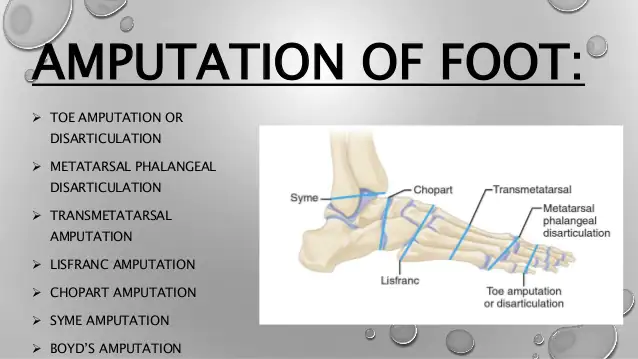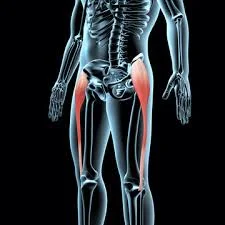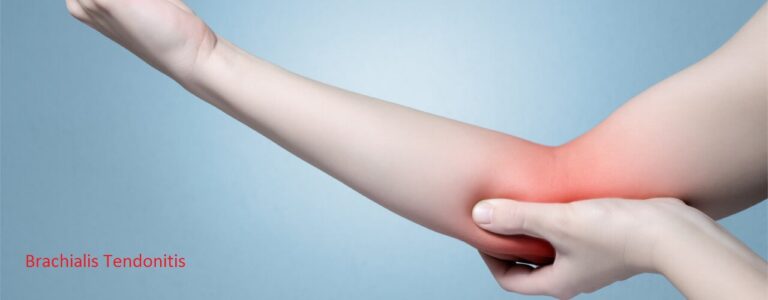Knee Stiffness
Table of Contents
Introduction
A possible outcome following any intra- or extra-articular injury is knee stiffness, or more precisely, a restriction in range of motion. It may result from a contracture affecting flexion, extension, or both on the contralateral side (assuming that side is healthy).
This stiffness has two components:
- Intra-articular: retraction of peri-articular soft tissues, excessive growth of fibrous scar tissue, intra-articular adhesions, and bone impingement as a result of intra-articular malunion.
- Extra-articular: Retraction of the muscle as a result of skin adhesions in the deeper layers, femoral aponeurosis, quadriceps adhesions to a femoral callus, and intermuscular septum.
These two elements will vary in quantity depending on the type of initial damage and the therapies used. Surgery is used to release certain anatomical structures as needed after the disease has been examined. Over the past 30 years, a variety of open and arthroscopic surgical procedures have been used to treat all causes of stiffness with a reduction in morbidity. We will go over the reasons for Knee stiffness, the several ways to treat it, and its symptoms one by one.
What is Knee Stiffness?
A stiff knee can significantly affect the quality of life. It not only restricts knee movement but also frequently hurts and interferes with daily tasks.
There are several causes of knee stiffness. Possible causes include oedema, weakening or tightness in the surrounding muscles, or a problem in the joint limiting movement.
A knee injury, illness, muscular imbalance, or changed knee biomechanics can all result in a stiff knee.
Causes of Knee Stiffness
The following are the most typical causes of a stiff knee:
- Meniscus Injuries: Damage to the knee cartilage
- Ligament injuries: Ligament injuries include injuries to the MCL, LCL, ACL, or PCL.
- Fractures: Damage to one of the knee bones
- Tendonitis: A tear or degeneration of a tendon in the knee is called tendonitis.
- Knee arthritis: Wear and tear on the knee joint causes knee arthritis.
- Knee bursitis: Inflammation of the knee bursa is known as knee bursitis.
- Gout knee: Gout knee is an inflammatory disease that results in the crystallization of the joint.
- Infections, malignancies, post-exercise stiffness, and arthrofibrosis are a few other uncommon reasons for stiff knee pain.
1. Meniscus Injuries
One of the most frequent causes of a stiff knee is a meniscus tear.
A meniscus injury occurs when there is damage to the special cartilage that lines the knee joint. As a result, the joint cannot move smoothly, which may result in knee stiffness.
Knee locking is a condition in which a piece of injured cartilage becomes lodged in the joint and restricts mobility.
Treatment options for meniscus tears that cause knee stiffness typically include PRICE, knee injections, strengthening and stretching exercises, and, in certain situations, surgery.
2. Knee Ligament Injuries
Ligament injuries, sometimes known as knee sprains, are another common cause of stiff knee pain.
Tough, fibrous bands called ligaments give the knee support. Some or all of the fibres may tear if one or more of the knee ligaments are overextended.
This causes the knee joint to enlarge and bleed, which limits movement and causes stiff knee pain. If therapy for the injured ligament is not received, the ligament may not repair properly, and the knee stiffness may continue long after the swelling subsides.
Complete ligament ruptures typically result in quick and severe knee oedema, which can severely limit knee movement.
3. Bone Fractures
Knee stiffness can also result from pain, instability, or misalignment caused by a break or fracture in any one of the knee bones. After a knee or patella fracture, not only will there be limited movement in the knee initially, but knee stiffness frequently remains even after the fracture has healed or been surgically corrected.
Therefore, if you have broken your knee, you must work hard at your rehab program to minimize swelling and avoid tightness of the muscles, as this will lessen the likelihood that you will have to live with permanent stiffness in your knee.
4. Knee Tendonitis
A stiff knee can often be attributed to tendinitis, which is the inflammation or degeneration of a knee tendon. Another common cause of knee stiffness is knee tendonitis, which is characterized by inflammation or degeneration of the knee tendons and is typically brought on by overuse.
Due to its weakness and ineffectiveness, tendon damage can alter the pull on the knee joint, reducing its range of motion. The tendon may become inflamed or taut, limiting the range of motion in the knee and producing a stiff knee.
Most frequently, knee tendonitis affects the area in front of the knee, either above or below the knee cap.
The tendon that connects the kneecap to the shin bone is impacted by patellar tendinitis, sometimes known as “jumper knee.”
- Quadriceps: The tendon connecting the quadriceps to the kneecap is affected by tendinitis.
- Hamstring: The tendons in the rear of the knee are affected by tendinitis.
5. Knee Arthritis
Knee stiffness is a common symptom of arthritis in the knee. The most common cause of knee stiffness in adults over 60 is knee arthritis. A stiff knee might result from one of two primary kinds of arthritis.
Knee cartilage and bone deterioration are the results of osteoarthritis, also referred to as wear-and-tear arthritis. The distance between the bones gets smaller, and the joint loses its smooth surfaces. This causes the joint’s range of motion to decrease, which results in a stiff knee.
Osteoarthritis-related knee stiffness usually gets better first thing in the morning or after extended periods of inactivity and then goes away very rapidly with movement. Usually, just one or two joints are impacted.
An inflammatory and fibrotic condition affecting many joints is a persistent systemic illness. It is frequently accompanied by redness, warmth, and swelling. It can lead to damage to the cartilage and bones, producing knee stiffness, generally in both knees.
Rheumatoid arthritis symptoms come and go, with good and poor periods. It usually affects more than one joint, like the knees, hands, and feet.
You don’t have to live with stiff knee pain if you have arthritis; there are many things you can do to make your knees less stiff, like exercising, applying heat, and making dietary changes.
- Knee Bursitis
Bursitis, inflammation of one of the knee bursa, is a frequent cause of stiff knee and swelling
Another common cause of stiffness in the knee is bursitis, which arises from swelling in one of the bursae, which are tiny sacs filled with fluid that act as cushions between the knee’s tendons and bones.
The two main causes of knee bursa inflammation are excessive friction and abrupt blows that compress them. Knee bursitis can occur at many locations around the knee and typically manifests as a squashy lump that resembles a little orange.
- Bursitis in the prepatellar area: The front of the knee
- Pes Anserine Bursitis: On the inner knee
- Iliotibial Bursitis: On the outer knee
- Bursitis of the semimembranosus: Behind the knee
- Infrapatellar Bursitis: Below the kneecap
- Bursitis of the semimembranosus: Behind the knee
Stiff knee discomfort may come from the fluid entering the knee and preventing it from moving through its entire range of motion.
- Gout Knee
Gout may also be the cause of tender knee discomfort. A build-up of uric acid that deposits crystals, usually in the knees or feet, causes gout, a kind of inflammatory arthritis
Gout knee symptoms typically appear quickly over a few hours and include redness, intense pain, and heat in the affected area, in addition to stiffness in the knee. When gout flares up, it can be very painful to move the knee or put any weight through it.
Usually, gouty knees are treated with ice, rest, and medicine. Gout attacks normally pass after a few weeks, but that’s enough time for the knee to stiffen up. Therefore, after a gout attack, exercises are crucial to preventing a stiff knee.
Symptoms
The main symptom of a pseudo-locked knee is pain. Additionally, a person could feel that they have these symptoms:
- A brief locking sensation in the knee
- A sensation that the knee is catching
- A feeling of looseness or instability in the knee
- Symptoms of a truly locked knee
- The inability to straighten the knee is the main sign of a truly locked knee. A person who has a locked knee may occasionally feel discomfort as well.
Additional indications and symptoms that a person may encounter if a loose body inside a joint is the cause of a real locked knee include:
- Chronic stiffness in the knee
- Difficulty straightening the knee fully
- Popping sensation in the knee
- Sensing a lump where the body is loose
- Intermittent pain and swelling
- Swelling and stiffness
- Redness and warmth to the touch
- Weakness or instability
A stiff knee may accompany other symptoms, which vary depending on the underlying disease, disorder, or condition. Conditions that cause stiff knees may also lead to symptoms in other body systems.
Indications of the knee that could coexist with a stiff knee:
The stiff knee may accompany symptoms related to other body systems, including:
- Fever
- Muscle weakness
- Pain or swelling in other joints
- Symptoms that might indicate a serious condition
A stiff knee may occasionally indicate a serious ailment that needs to be checked out right away in an emergency room.
- High fever (higher than 101 degrees Fahrenheit)
- Cold feet and a sluggish or nonexistent heartbeat
- Loss of sensation in the lower leg
- An obvious breakage or deformity of the bones
- Incapacity to move a body part or paralysis
- Severe bleeding
- Uncontrollable pain
A time check with your doctor conveys the nature of pain. Different people will give different diagnoses. stiff joints that felt bound; normally only lasts for a half-hour or less. Joint pain and stiffness can also happen after a lengthy period of sitting or upon waking up.
Other symptoms, such as swelling in knee OA, feeling warm and sound (cracking), bowleg, progressive degeneration of cartilage, and bony enlargement, often accompany osteoarthritis.
The symptoms experienced by those with OA vary greatly. Some people’s disorders make them so “flawed.”
But there are also no dramatic symptoms, such as the display of photos and x-rays of joint degeneration. Even if pain is not always felt, it is often intermittent. A lengthy period of suffering is frequently lost in a few years.
Diagnosis
The underlying reason for a locked knee may be found with the use of knee imaging scans.
A physician will start by inquiring about pain and swelling symptoms. Next, they will perform a physical examination to look for indications of soreness, inflammation, and bruises on the knee.
To assess the knee joint, the physician may apply pressure or force during the examination. To evaluate the person’s mobility, they can then be asked to walk in the room.
A physician could occasionally advise diagnostic imaging to take a closer look at the knee. Examples of such tests include:
- magnetic resonance imaging (MRI)
- computerized tomography (CT) scan
- X-ray
- ultrasound
- The doctor can look for indications of infection or inflammation with the aid of additional testing. These include blood tests and a procedure called arthrocentesis. A sample of fluid from the knee joint must be obtained for this treatment.
X-ray
An X-ray can help detect fractures or degenerative bone problems and is typically the first test ordered.
CT scan
A CT scan, also known as a computerized tomography scan, produces cross-sectional images of the area of interest by combining hundreds of X-rays captured from various angles and directions. A CT scan can pick up subtle fractures, degenerative changes, or even deposits within the joint cavity before the manifestation of arthritis.
Ultrasound
Sound waves are used in an ultrasound to create images of the soft tissues surrounding and inside the knee joint. This aids in identifying indications of soft tissue damage or inflammation.
Magnetic Resonance Imaging
MRI produces three-dimensional (3D) pictures of the knee joint by using magnetic and radio waves. This aids in identifying damage to the muscles, tendons, ligaments, or cartilage.
Prevention
Staying within one’s physical limitations when exercising can help one avoid harm. Certain accidents and diseases can result in locked knees, and they are not always preventable.
Nonetheless, there are steps people can take to better safeguard their knees. These include:
- Avoiding contact sports
- Putting an end to activities that result in knee pain
- Exercising within physical limits
- Strengthening the leg muscles and core
- Maintaining flexibility
- Exercise caution in locations that are unstable or slippery to help prevent falls
1. Keep your weight in a healthy range. The most important thing a person can do for the health of their knees is to stay within a healthy weight range. This applies to children, teens, and adults. Obesity can lead to the early onset of arthritis.
2. Engage in a regular exercise routine. The ideal kind of exercise to maintain knee mobility and pain-free function is low-impact exercise. This includes utilizing an elliptical machine, walking, riding a bike, swimming, or working out in a pool.
3. Incorporate weight training into your exercise program. Osteoporosis is avoided, joints are stabilized, and muscles are kept strong by weight training.
4. Wear supportive shoes with good arch support. Wearing the right shoes gives the rest of your body a solid base.
Treatment of Knee Stiffness
Reducing discomfort and inflammation, as well as restoring knee flexibility and mobility, are the main goals of treating stiff knees. In the early stages of knee stiffness, particularly after a knee injury, the following PRICE principles can help:
- Protection: Use a brace, for example, to stop additional injury to the joint.
- Rest: Remain away from stressful activities and move your leg carefully to prevent cramping.
- Ice: Applying ice frequently might help lessen knee stiffness by reducing swelling.
- Compression: Tubigrip and other specifically made bandages support the knee and lessen swelling.
- Elevation: Maintaining an elevated leg facilitates the removal of extra fluid from the joint.
Home Remedies and treatment options:
A stiff knee’s therapy options are influenced by its underlying cause.
The following at-home remedies might be sufficient to reduce pain and stiffness until the injury heals if it’s a mild injury:
Using an ice pack on the knee, resting it, taking over-the-counter (OTC) nonsteroidal anti-inflammatory medicines, and using a knee brace to stabilize the knee and aid in stopping additional damage.
A person might need to consult a doctor for more serious injuries and severe or chronic knee stiffness. The physician will attempt to identify the underlying reason for the patient’s knee stiffness and will suggest suitable measures.
Various therapies may be used, depending on what is causing the stiffness in the knee:
- Taking prescription pain medications
- Using corticosteroids
- Using biologic surgery with disease-modifying antirheumatic medication to treat rheumatoid arthritis
- Physical therapy to enhance general mobility and knee function
Treating the stiff knee depends on the underlying cause. Some common ways of treatment include:
- Cold therapy, or cryotherapy, is an approach in which extreme cold activates the immune, endocrine, and nervous systems to reduce pain and inflammation.
- Heat: Helps to relax the knee and promotes blood flow
- Aspiration is the process of administering a local anaesthetic while using a needle to remove extra blood and fluid from the area. It releases the pressure caused by pain in that location.
- Remain Active: Exercise promotes better joint lubrication and reduces oedema.
- Physiotherapy is a common method to strengthen the muscles of the knee. The physician recommends exercises to help increase the range of knee movement. Stretching and strengthening exercises
- Dietary changes to facilitate weight loss and lower the amount of uric acid in the body help.
- Anti-inflammatory medications alleviate sore knees and soothe discomfort. The two most often given drugs are acetaminophen and aspirin.
- The knee support will help prevent further damage and speed up the recovery process. There are numerous alternatives for knee support.
Physical Therapy:
Exercises and stretches that may help:
Exercise should be avoided for those who have stiff knees in some situations. Exercise isn’t the best thing to do when recovering from certain knee ailments; rest is more beneficial.
Exercise, however, may be beneficial for a stiff knee resulting from an arthritis-related condition. According to the Arthritis Foundation, several stretches and workouts may be beneficial in various ways.
- Exercises for strengthening: Raising the strength of the muscles surrounding the knee helps to lessen joint stress. These workouts include things like hamstring curls and leg lifts.
- Range of motion: Stretches and activities that extend the range of motion of the knee help to keep the joint moving and relieve stiffness. These workouts include stretching with a yoga strap and heel slides.
- Aerobic exercises: These can increase a person’s energy levels and help them lose any additional weight that could be putting undue strain on their knees. These workouts include swimming and cycling, for example.
- Exercises for balance: These build muscle around the knee and lessen the chance of falling, which could cause more injury to the joint. These workouts involve standing on a foam cushion and standing on one leg.
When beginning any new fitness regimen, an individual with arthritis may wish to talk with their physician.
Additionally, the following advice can help avoid or treat knee pain and stiffness:
- Avoiding stretching until sufficiently warmed up
- Stretching the legs before and after exercise
- Stretching gently and without pushing yourself to the limit
- Using proper form when exercising
- Ensuring the strength balance of the leg muscles
- Avoiding exercises that make the symptoms worse
Exercises:
- Seated Hamstring Stretch
Tight or stiff hamstrings can make it hard to properly straighten the knee while standing or walking. After spending a long time sitting or lying down, try this stretch.
- Sit on the edge of your bed or a chair.
- With the heel supported so that your toes are free and pointed upward toward the ceiling, extend the leg you wish to extend straight out in front of you.
- While maintaining the position of your leg, bend forward at the hips and draw your torso toward your thighs.
- Keep moving until the back of your leg starts to stretch.
- Take two to three sets of 30-plus-second rests on each leg.

If you don’t like this stretch, you can alternatively try standing and leaning forward while doing a hamstring stretch on your back using a stretch strap.
- Quad Stretch in Prone
Not only can the hamstrings get tight, but the front of the thigh’s quadriceps muscles can also become sore. Tight quadriceps can impair normal kneecap tracking and make it feel impossible to bend the knee comfortably. It can help in stretching these muscles every day.
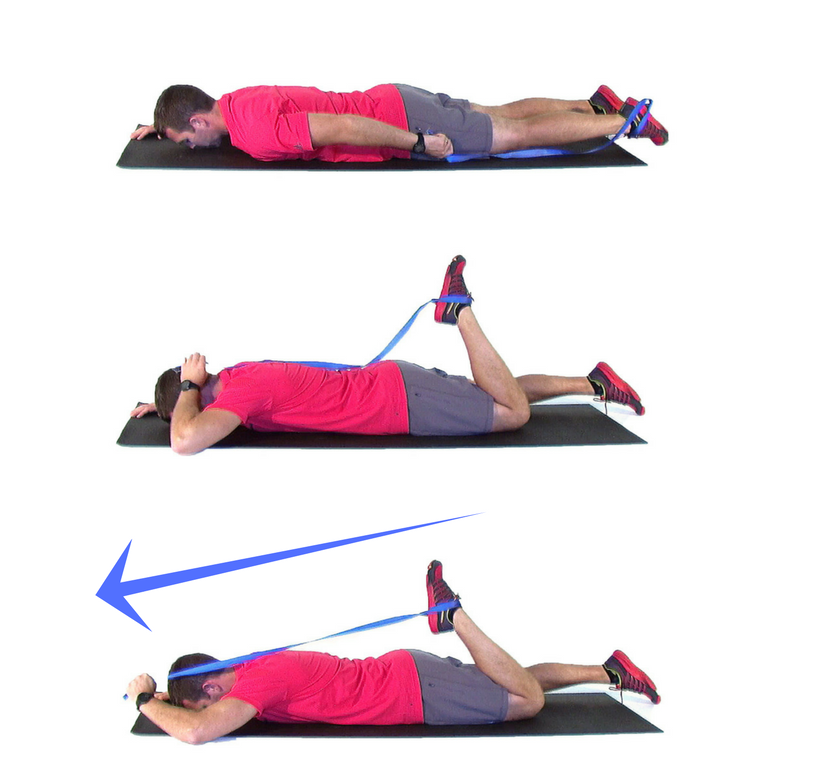
- Wear a stretch strap while lying on your stomach.
- Tie the strap around the leg you want to stretch’s foot.
- To prevent the lower back from arching, keep your entire body relaxed and in contact with the ground. However, tense your abs a little bit.
- Bend the knee and use your hands to move your heel toward your buttocks.
- Pull continuously until the front of the thigh stretches strongly.
- Take two to three sets of 30-plus-second rests on each leg.
If this position is too uncomfortable for you, attempt a standing or kneeling, lunge or simply stand with one heel brought toward your butt with your hand.
- Range of Motion in the Knee
One of the best strategies to encourage improved joint movement and lessen the symptoms of stiffness is to gently range your knees daily. Any pain you may be feeling can get worse if you aren’t stretching or exercising regularly, which limits your range of motion in your knees. This can be cleared off, and ideal knee joint health can be promoted with knee range of motion.
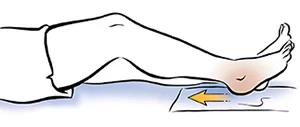
- Place yourself comfortably on your back.
- To make it easier for you to slide your feet onto the ground, grab a towel or wear socks. Slide it as close to your buttocks as you can, keeping your heel on the ground (you might need a shopping bag or piece of plastic beneath your foot if you’re on a soft surface).
- Knee bend as much as is comfortable, then hold the position for up to five seconds.
- Put your heel back in place and try to extend your knee as much as you can for a maximum of five seconds.
- For ten to fifteen repetitions, alternate as much as you can between bending and straightening.
- Repeat each leg for two to three sets.
- You can also use a stretch strap to direct your movement up and down, for an additional stretch when your knee is bent, or if you need extra assistance because of leg weakness.
- If this position is too uncomfortable for you, try doing a simple range-of-motion exercise while seated.
- Knee Exercises While Seated
Sitting-leg strengthening exercises are a wonderful option if your knee stiffness is restricting your exercise tolerance. You can also perform sitting exercises while multitasking if your job or leisure activities require you to sit for extended periods. Here are some examples of actions you can take:
- Long-arc quad: Just sit and alternately bend and straighten your knee.
- Marching: To march in place, alternately raise your feet off the ground.
- Hip abduction: Press on the outside of your thighs with your hands or a resistance band.
- Hip adduction: Squeeze a ball or cushion between your legs to perform hip adduction.
- Heel slides: Bend a towel beneath one foot as far as you can under your chair.
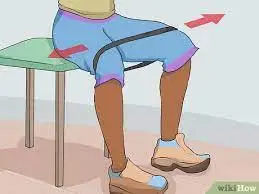
- Walking
Simple exercises are sufficient to alleviate stiff knees. Regular exercise of any kind is excellent for maintaining the health of your knees and easing stiffness—as long as it doesn’t exacerbate your symptoms. One of the simplest ways to increase circulation, maintain the legs strong and balanced, and get moving is to walk.
- Choose a safe time of day and place to walk (a walking track, a treadmill, a neighbourhood, etc.).
- Put on supportive shoes and clothes that fit.
- Select a time, distance, and/or pace that you can do without aggravating your symptoms.
- If you’ve never walked before, begin slowly and increase as tolerated.
- Continue your walking regimen regularly; preferably, do so twice a week.
- Swimming
If you have painful and tight knees, low-impact exercise can help you tolerate movement without aggravating your symptoms. Despite the temptation to stay away from exercise due to sore knees, it’s crucial to discover activities you can endure. This is because maintaining your knees’ strength and activity is one of the best things you can do for them. You can make use of a pool in a few different ways to your benefit:
- Swimming laps
- Water aerobics (individually or with a guide)
- Water jogging
- Leg-specific workouts in shallow water or using a flotation device, such as leg kicks, knee ROM, squats, etc.
- Stationary cardio
Another fantastic method to maintain a regular exercise schedule is to use the cardio equipment at your neighbourhood gym or in the comfort of your own home. Static cardio equipment has a lot of low-impact choices, so it can be great for treating knee pain and stiffness as well. The following options are available, arranged from least to most significant impact:
- Stationary bike
- Elliptical,
- Upright rowing machine
- Climbing stairs
- Treadmill
As long as your knees can tolerate it, you can pursue any of the options. Selecting a piece of equipment that maintains your motivation and interest is crucial if you want to work out regularly.
- Functional activities:
The most crucial thing for the knees is to continue doing the things you enjoy and that are necessary for your day-to-day existence. Never forget how important it is to pay attention to form and adjust anything that hurts or makes your knees more rigid. The following are some of the best choices for functional movement:
- Mini Squats
- Mini Lunges
- Single-Leg Balance
- Marching
- Step-Ups
- Heel Raises
- Side Stepping
How does exercise loosen stiff knees?
It may seem strange to exercise while you’re sore and stiff. However, the appropriate workouts done in the right amounts can work wonders to release tight spots. A few of the reasons exercise is good for stiff knees are listed below:
- To lessen wear and tear, keep the knee joints’ cartilage moisturized.
- Encourage the flexion and extension of the knee’s functional range of motion.
- Improved circulation to support tissue extensibility and repair
- Endorphin release for a natural painkilling effect
- Increased capacity to tolerate everyday activities
- Controlling weight to lessen knee strain
Exercise Tips for Knee Pain:
There are techniques to get the most out of any knee exercise program you begin or maintain. Remember the following advice:
- Do you find it difficult to tolerate exercise? If you want to exercise without the burden of carrying weight, try doing exercises while seated or jumping into a swimming pool.
- Use conservative treatment alternatives in addition to your exercise routine for joint pain relief and tissue health. These include foam rolling, electrical stimulation, temperature therapy (using an ice pack or heat source), and over-the-counter pain medications like ibuprofen or naproxen.
- Before and after your strengthening activities, stretch and warm up your knees.
- When engaging in more demanding activities that could result in discomfort and stiffness, support the knee with equipment like compression sleeves or knee braces.
- Gradually increase the intensity of your workout by using resistance bands, ankle weights, a wider range of motion for your knees, and weight-bearing exercises.
- Repetitive steps, squats, leaping, and other high-impact exercises that can cause strain on the knees should be avoided.
- To prevent excessive stiffness, especially after prolonged periods of sitting, shift postures periodically. Try to stand up and stretch or move from a stationary position for at least five minutes every hour.
- Doing your exercises incorrectly and having trouble with them? To optimize your outcomes with a customized treatment plan, think about physical therapy, especially if you have osteoarthritis in your knees or are recovering from an injury.
Summary
Many conditions, including injuries, arthritis, overuse, and tight muscles in the legs, can result in knee stiffness, a typical problem. The standard course of treatment for stiff knee discomfort includes rest, physical therapy, and anti-inflammatory and painkiller drugs. The severity of the ailment will determine how long it takes to recover, but generally speaking, symptoms may take weeks or months to completely go away.
The most typical causes of knee stiffness include arthritis and knee trauma. Knee stiffness and related symptoms can often be relieved with rest, ice, and over-the-counter drugs.
It is widespread among people who are very physically active, as well as older adults. The most frequent causes of knee stiffness include arthritis and knee trauma. In many cases, knee stiffness and related symptoms can be relieved with rest, ice, and over-the-counter drugs. But if someone has had a knee injury or if their stiffness is accompanied by other symptoms, they should consult a doctor.
Individuals who think they may have knee arthritis should also consult a physician for a diagnosis and recommended course of care. An important part of treating your knee stiffness is physical therapy, which you can accomplish from the comfort of your house with the help of internet medications.
FAQs
Although many people have low vitamin D levels without realizing it, vitamin D deficiencies can have an impact on one’s physical and emotional well-being. One of the physical manifestations of a deficit could be joint pain from muscles, such as rheumatoid arthritis (RA), which commonly affects the knees, thighs, and hips.
As you age, the connective tissue in your tendons and ligaments becomes more rigid. Additionally, ageing-related muscular atrophy can put more strain on your joints, particularly your knees. According to Roach, your pain is probably the beginning of osteoarthritis (OA), which often affects women more than men and typically begins in the 50s.
Knee stiffness is a frequent problem. It is especially prevalent in older folks and those who engage in a lot of physical activity. The most frequent causes of knee stiffness include arthritis and knee trauma. Knee stiffness and related symptoms can often be relieved with rest, ice, and over-the-counter drugs.
Place a bump—like a rolled-up towel—under your heels if you’re lying flat on the floor or in bed. Tighten your quadriceps, which are the muscles on the front of your thighs, to push your knees down toward the floor. For a few seconds, keep your knees as straight as you can, then repeat.
The standard course of treatment for stiff knee discomfort includes rest, physical therapy, and anti-inflammatory and painkiller drugs. The severity of the ailment will determine how long it takes to recover, but generally speaking, symptoms may take weeks or months to completely go away.

